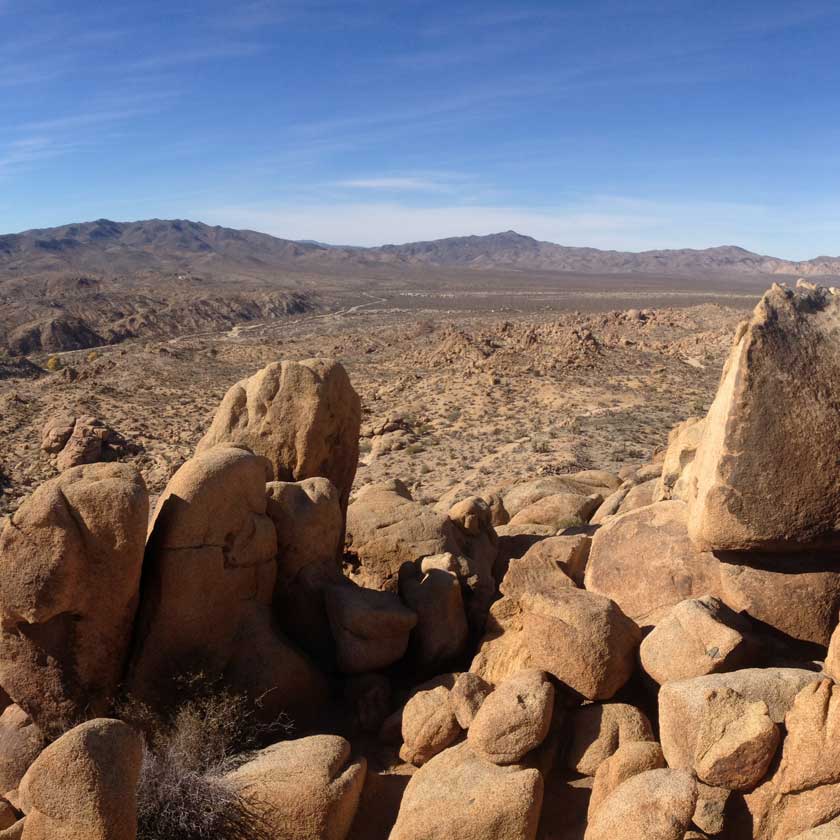From the parking lot the oasis is immediately visible in the wash below. A short walk down a somewhat irregular ramp leads you into the oasis. This is a great spot to visit any time of the year, but if you’re passing through the area in October I’d make an extra effort to see the golden cottonwood leaves contrasted against the green of the palm fronds and blue of the sky.

Dense fan palms in Cottonwood Springs Oasis

Visit in October for golden cottonwood leaves
Any natural water source in a desert has a long history of use, and this is certainly true about Cottonwood Spring Oasis. Native Cahuilla people passed through yearly to collect mesquite beans and process them into flour using a bedrock mortar and pestle. Look for an example of the bedrock mortar just on the other side of the wash.

Bedrock mortar found near Cottonwood Springs Oasis
The first mention of Cottonwood Spring was in 1875 when miners and prospectors surged into the area. Water is essential for mills to process gold, so this was an obvious choice for entrepreneurs such as Chester “Cactus Slim” Moorten to set up shop. Moorten owned and operated several mining claims in the area in the 30s and 40s. He established a 5-stamp mill to process the gold ore further down canyon. During his time managing the mining operations, Moorten also cultivated over 3000 desert plants and cacti at the Moorten Botanical Garden in Palms Springs, which you can still visit today.
Very little remains of Moorten’s Mill or the other nearby mining sites. Luckily, there is still plenty to see nearby. By continuing down Cottonwood Wash you’ll pass by the smaller Wood Spring before reaching a dry fall after 0.3 miles. This is a great spot to look for bighorn sheep in the early morning hours. Or, continue further down the wash on an old teamster road to visit the sparse remnants of Moorten’s Mill.
Cottonwood Spring Oasis also serves as the first stop on the popular Mastodon Peak and Lost Palms Oasis hikes.
Perhaps the best way to enjoy Cottonwood Spring Oasis is by slowing down for a bit to sit, relax, and listen. This is one of the best birding locations in the park, so take some time to listen to their calls, the wind passing through the leaves, and enjoy the slow desert lifestyle.


